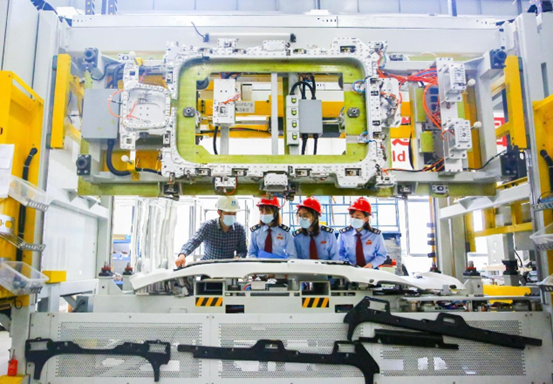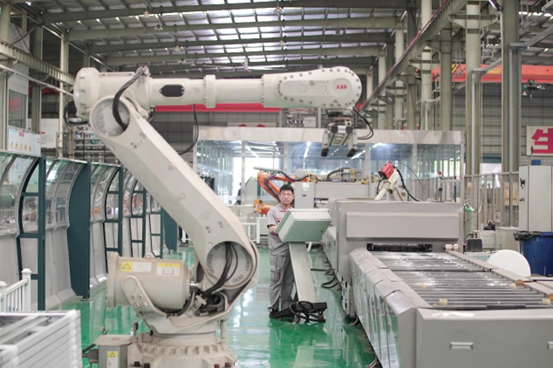By Wang Guan, People's Daily
Enterprises play a principal role in innovation. They are also the primary driving force for innovation.
Today, the research and development (R&D) expenditure of Chinese enterprises accounts for over 70 percent of all R&D expenditure of China.
To give full play to the guiding and supporting role of key high-tech enterprises and build a sound environment for micro-, small-, and medium-sized tech firms, China has rolled out a series of preferential tax policies, encouraging enterprises to increase R&D expenditure and foster new growth drivers.

Netstar, a software developer in north China's Hebei province, is currently developing a low-code development platform. "It is the tangible benefit brought about by preferential tax policies that encouraged us to expand investment in new technologies and products," said Dong Aijun, chairman of the company.
In 2022, China raised the ratio of additional tax deductions on small- and medium-sized tech firms' R&D costs to 100 percent.
Dong said the higher ratio is great news for enterprises. "Our 2022 R&D expenditure is estimated to reach 18 million yuan ($2.58 million). Thanks to the increased ratio, an additional 4.5 million yuan will be deducted from taxable income. The corporate income tax is determined by enterprises' profit, and with this extra part of expenditure, we'll pay less corporate income tax," Dong noted.
"We'll use the money saved to make more innovations, introduce more talents, and develop new products and services that better meet the demand of our clients, so as to make our products more competitive," Dong told People's Daily.

Capital shortage remains a severe challenge for the continuous innovation of tech firms, especially small- and medium-sized ones. The additional tax deduction for R&D expenses allows enterprises to expand their R&D expenditure and pay less tax, and encourages them to enhance their efforts in innovation.
There was also good news for enterprises planning to purchase equipment and instruments.
"We planned to purchase 51.2 million yuan of automation equipment the next year. With the new policy, we decided to make the purchase in the fourth quarter of 2022, as it would save a big sum of money," said Wang Qiang, who heads the accounting department of a precision parts manufacturer in Jincheng, north China's Shanxi province.
Wei Hujun, an official with the tax office of Jincheng Economic and Technological Development Area, told People's Daily that according to a previous policy, high-tech firms purchasing new equipment worth less than 5 million yuan would be entitled to a one-off deduction of total purchase costs from taxable income.

Now with the new policy, all equipment purchased by high-tech firms in the fourth quarter of 2022 are eligible for the deduction, and will be 100 percent deducted from enterprises' taxable income, Wei added.
He said this encourages high-tech firms to upgrade equipment and better commercialize their technological outcomes.
Besides, China has also rolled out measures that offer tax preference for enterprises that sponsor non-profit scientific institutions, universities, and government-based natural science funds, which both alleviates capital pressure for these enterprises and supports the innovation in basic research of scientific institutions.
"While making innovations in electric locomotives and relevant equipment, we need to cooperate with universities to enhance the cultivation of high-level talents. Our company has spent around 12 million yuan on basic research this year, which means 24 million yuan will be deducted from our taxable income," said Zhou Qinghe, president of CRRC Zhuzhou Locomotive Co., Ltd.
"We'll keep supporting basic research and foster more key technologies to contribute to high-quality development," Zhou added.


